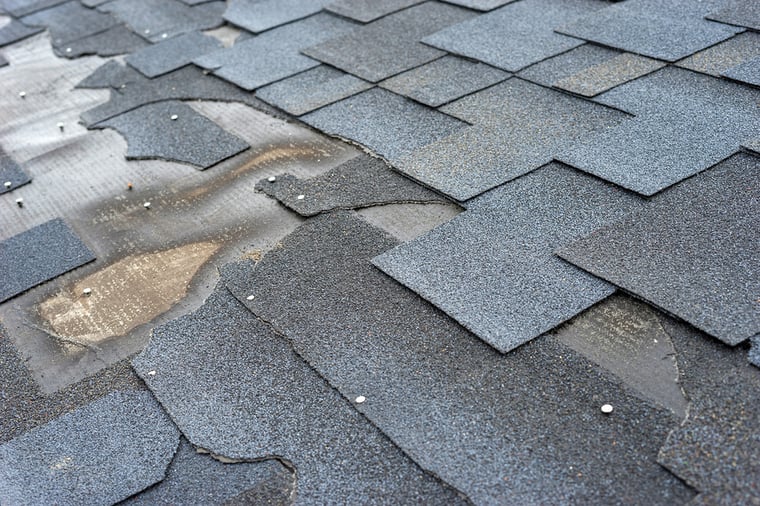
When your roof fails, it leaves you with a partial or complete collapse of the structure, causing damage to your property and belongings. Not only does it leave you and your home vulnerable, it also requires a complete roof replacement, which can be costly. By learning the common causes of roof failure and signs of roof damage, you can avoid roof replacement with timely repairs.
What Is Roof Failure?
When people refer to a roof failing, it means a roof collapses and a total loss of its structure. If you don’t know the signs of damage to look for, you may not be aware of problems in a roof until the whole structure collapses.
Roof failures are costly and time-consuming to repair, as some or all of the underlying structure needs to be replaced. If you’ve noticed leaks from your roof inside your home, you may worry you’re on the brink of a roof failure. But a leak doesn’t always mean disaster.
You might be wondering...
Are Roof Leaks Common?
Even on old roofs, it’s unusual for leaks to start in areas of uninterrupted shingles. Instead, leaks originate in penetrations in the roof. Places like chimneys, skylights and roof vents can cause leaks that run downhill.
Often, if you address a roof leak as soon as you notice it, you can prevent roof replacement. Many common roof leaks are easy and inexpensive to fix. Ignoring the problem only compounds it, causing potential for future roof failure.
Some common signs of a failing roof include:
- Missing Tiles: They leave decking vulnerable to weather and wind.
- Lifted, Cracked or Blistering Shingles: If your roof tiles look bad, they are!
- Loose Granules: As roof shingles age, they lose granules from their surfaces.
- Water Damage: Dripping ceilings, dark stains and discoloration show there’s more water damage where you can’t see.
- Sagging: Your roof may sag because of poor design or poor construction. A professional roofer should evaluate it for potential roof replacement.
- Higher Energy Bills: If your heating/cooling bills are more expensive, the cause may be insufficient roof insulation or ventilation.
- Aging Roof: This depends on your roof’s material. Asphalt will age and go bad after about 25 years. Other materials will last longer.
Common Causes of Roof Failure
These aren’t the only reasons a roof may collapse, but they are the most common. The only way to know if your roof has these common issues is for an expert to inspect your roof. Trained professionals will look for these issues:
Poor Workmanship
Roofers who cut corners or don’t have the experience to install a roof that lasts are a major cause of failing roofs. Everything from the number of fasteners used, the amount of foot traffic during installation, flashing mistakes, missing or faulty pieces, and other problems can cause serious issues years down the road, long after the work is completed.
Blisters from Trapped Moisture
Visibly raised bubbles are among the most common roofing problems. Direct sunlight heats and expands water vapor trapped between the layers of the roof. This expansion pushes the layers apart, damaging the roof. Moisture enters the roof through damp insulation, wet felts or installation during rain.
Poor Ventilation
Roof ventilation allows hot air and moisture to escape the attic while pulling in cool air from outside. Improper ventilation causes moisture to gather and, combined with warm temperatures, can cause mildew, rust of metal components, sagging decking, and even reduce the lifespan of the tiles.
Defective Flashing Around Penetrations
Using metal and membrane materials together causes eventual splitting around penetrations. The materials expand and contract at different rates and over time they’ll pull away from each other, creating leaks in the roof. If left untreated, these problems will compound over time until compromised decking causes a roof failure. While it’s a good idea to familiarize yourself with these signs, the best prevention for a roof collapse is an evaluation by a roofing professional.
Avoid a Roof Replacement with Routine Roof Inspections
A 14-point inspection will look at the current state of your roof and identify the problems to fix them before a roof replacement is necessary. Trained experts can spot broken and missing tiles, cracked and buckling materials, and early signs of water damage. By assessing the state of your roof, they will determine what repairs are necessary. Contact the experts at First Quality Roofing & Insulation to schedule a roof inspection today.

















